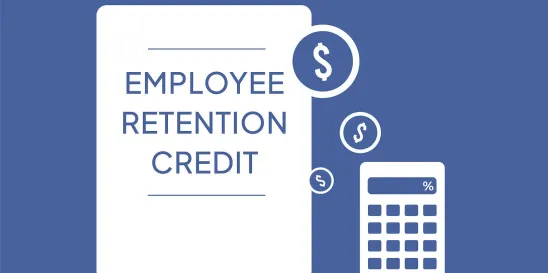It’s no secret. Lots of people made poor decisions about their eligibility for the employee retention credit (“ERC”), which was passed by Congress to help businesses weather the pandemic-induced economic downturn. Apart from mistakes that may have been made because of the daunting complexity associated with most tax matters, there have been plenty of bad actors who persuaded large numbers of businesspeople that almost everybody is eligible to take the credit.
The Internal Revenue Service (“IRS”) is implementing a “carrot and stick” policy, with an eye toward those who erroneously claimed eligibility for the ERC.
The “carrot” is a new IRS Voluntary Disclosure Program, which is in place for a short period of time, until March 22, 2024, and allows taxpayers who qualify to unwind questionable ERC claims.
The “stick” is the continuation of an IRS audit campaign for those who do not take the “carrot.” The IRS is aggressively investigating what it has determined to be widespread ERC fraud; in September, the IRS announced that it had already uncovered more than $8 billion of suspected fraud and that, as a result, it was imposing a moratorium through at least the end of 2023 on processing new claims by taxpayers seeking to obtain the credit.
Who might find the carrot attractive?
Clearly, one category of employers that should seriously consider this Program are those who filed questionable ERC claims in reliance on aggressive third-party “consultants.” This is especially true of companies undergoing a change of control or raising money for investment in their business. Because due diligence during these types of transactions often uncovers questionable ERC claims, those companies are also potential candidates for the Program if they had taken questionable ERC positions without such third-party advice.
A purchaser, having little or no appetite to absorb the risks associated with an erroneous ERC claim, will often impose a purchase price discount to account for the risk, or alternatively, require the seller to remedy the issue to the satisfaction of the purchaser. Understandably, most sellers view both of these options as problematic, but with this new Voluntary Disclosure Program, there is a more realistic path to resolution in these circumstances. Those engaged in a sale or financing process, or those considering a sale or financing, should closely consider the Voluntary Disclosure Program before its end date in March.
An Overview of the ERC
The ERC was enacted as part of the CARES Act to provide a refundable tax credit against employment taxes, if certain requirements are satisfied, equal to 50 percent of the qualified wages an eligible employer paid to employees after March 12, 2020, and before January 1, 2021. For purposes of calculating the ERC, up to $10,000 of an employee’s qualified wages paid during that period could be taken into account. Subsequent legislation extended the ERC through the third quarter of 2021 and increased the amount of the credit to 70 percent of qualified wages up to a maximum of $10,000 per employee per quarter.[1]
In the case of an employer that averaged 100 or fewer full-time employees in 2019, qualified wages after March 12, 2020, and before January 1, 2021, are generally all wages paid to employees during the period, regardless of whether the employees were performing services. In 2020, employers that averaged more than 100 full-time employees in 2019 may only treat wages paid to employees during the period for the time they are not providing services as qualified wages. The 2019 full-time employee threshold used to determine qualified wages in 2021 was increased by Congress from 100 to 500.
In order to qualify for the credit, an employer must have experienced (i) a full or partial suspension of more than a nominal portion of the employer’s business operations due to a governmental order or (ii) a significant decline in gross receipts. There are special rules that need to be followed for purposes of applying these requirements to employers that are part of a controlled group.
An employer is treated as having experienced a significant decline in gross receipts for a calendar quarter in 2020—and be eligible for the credit with respect to qualified wages paid during that quarter—if the gross receipts for the quarter are less than 50 percent of the employer’s gross receipts for the same quarter in 2019. An employer is considered to have experienced a significant decline in gross receipts for a calendar quarter in 2021 if the gross receipts for the quarter are less than 80 percent of the employer’s gross receipts for the same quarter in 2019. Alternatively, an employer is permitted to determine if the decline in gross receipts test is met for a calendar quarter in 2021 by comparing its gross receipts for the immediately preceding calendar quarter with those for the corresponding calendar quarter in 2019.
Much of the uncertainty and controversy surrounding the ERC stems from employers having taken the position that they are eligible for the ERC on the basis of a full or partial suspension of their business due to a governmental order. Notably, some employers have mistakenly concluded that supply chain problems, which are not related to a specific governmental order, and recommendations from government agencies that are not in the form of an order, qualify them for the ERC.
The IRS’ ERC Withdrawal Announcement
On October 19, 2023, the IRS announced details of how a business could withdraw a pending ERC claim. Withdrawing an ERC claim permits a business to treat the claim as if it were never filed, enabling the business to avoid potential penalties or interest. Withdrawing the claim, however, does not exempt a business from potential criminal investigation or prosecution. In addition, the withdrawal process does not technically apply to those businesses that had already received a refund from a filed ERC claim.
The ERC Voluntary Disclosure Program
On December 21, 2023, the IRS issued Announcement 2024-3, describing a Voluntary Disclosure Program. Employers who have received a credit or refund of taxes attributable to the ERC may participate in the Program as long as:
- They are not under criminal investigation, and they have not been notified that the IRS intends to commence a criminal investigation;
- The IRS has not received information from a third party alerting the IRS to their noncompliance, nor has the IRS acquired information directly related to the noncompliance from an enforcement action;
- They are not under an employment tax examination by the IRS for any tax period(s) for which they are applying for the Voluntary Disclosure Program; and
- They have not previously received notice and demand for repayment of all or part of the claimed ERC.
In order to participate in the Program, an employer must submit a Form 15434, Application for Employee Retention Credit Voluntary Disclosure Program, via the Document Upload Tool at irs.gov/DUT. The submission must be made on or before 11:59 P.M. local time on March 22, 2024.
According to FAQs posted on the IRS’s website, in addition to filing the Form 15434, a participant in the Program will be required to:
- Cooperate with the IRS, including responding timely and accurately to any requests for more information;
- Voluntarily pay back the entire ERC received, minus 20 percent;
- For ERC amounts attributable to a tax period ending in 2020, sign and submit a Form SS-10, extending the statute of limitations until April 15, 2025; and
- Sign a closing agreement, which provides finality to the matter.
Why Filing Under the Voluntary Disclosure Program Makes Sense
Employers who have taken the ERC without having satisfied the ERC’s requirements would do well to consider participating in the Program. An employer that participates in the Voluntary Disclosure Program and satisfies the applicable requirements qualifies for the following:
- They are only required to pay back 80 percent of the amount of the ERC that they claimed.
- If they claimed the credit via a refund, they do not have to repay any of the interest that the IRS paid to them with the refund.
- They are not exposed to interest and penalties on the amount of the ERC.
- They are not required to reduce their wage expense attributable to the ERC or include the 20 percent they are not returning in their income.
Participation in the Program does not protect a person who has willfully filed a fraudulent employment tax return claiming the ERC from criminal investigation and prosecution.
[1] A larger credit was provided for the third and fourth quarters of 2021 for employers whose gross receipts in either of those quarters (“severely financially distressed employers”) were less than 10 percent of their gross receipts in the same quarter in 2019. Also, special rules allow businesses that began a trade or business after February 15, 2020, and that satisfy a gross receipts test (“recovery startup businesses”), to claim the ERC for the third and fourth quarter of 2021.





 />i
/>i
